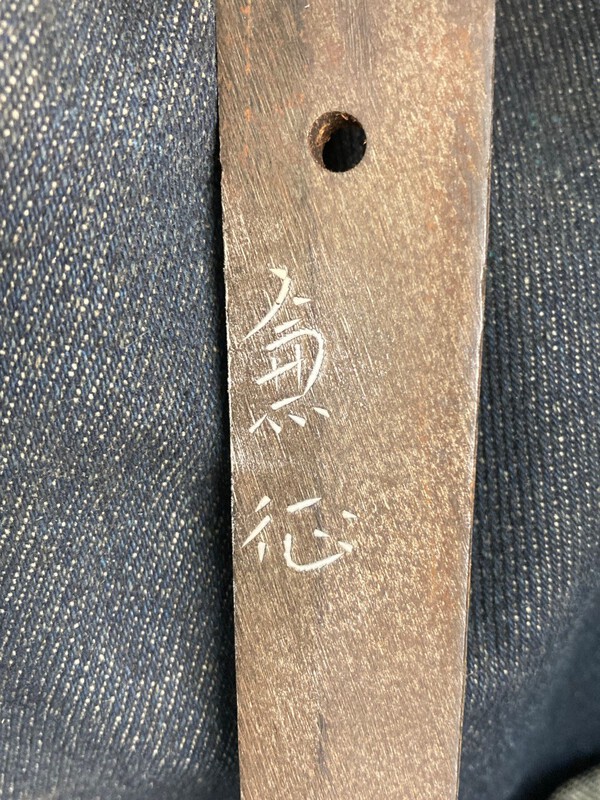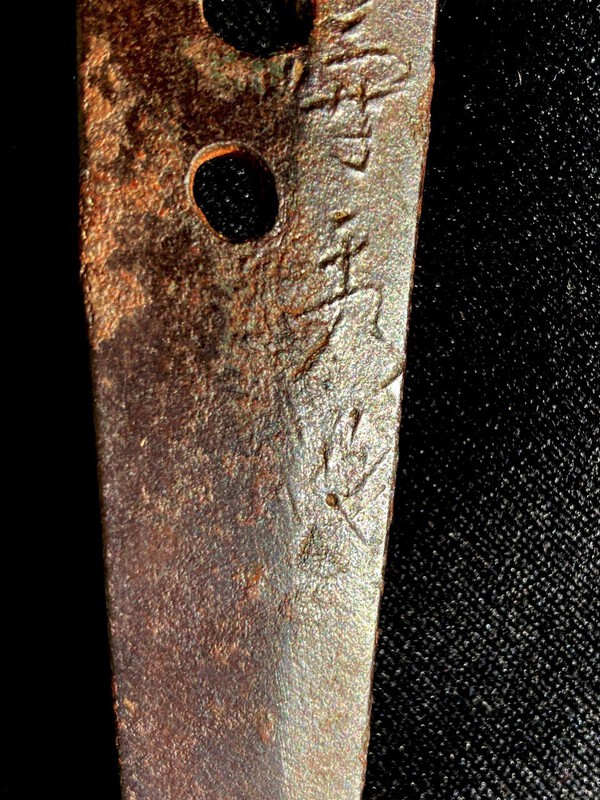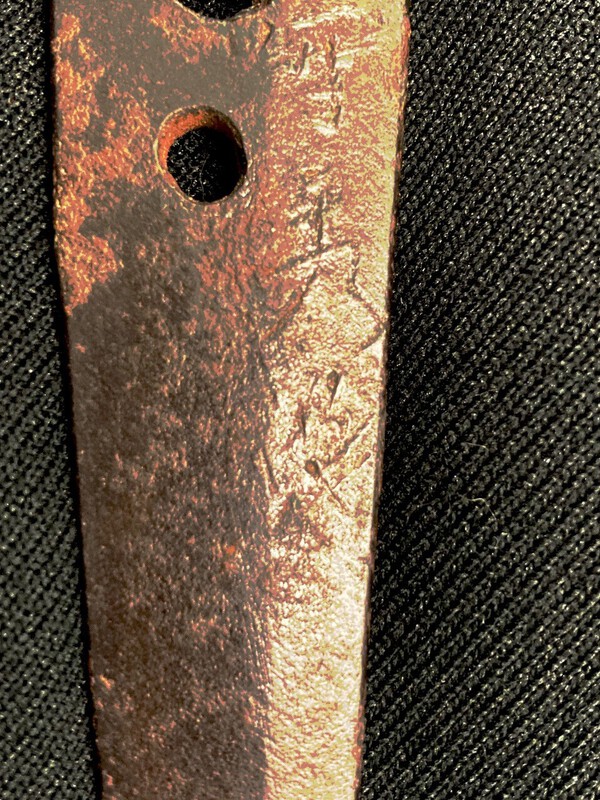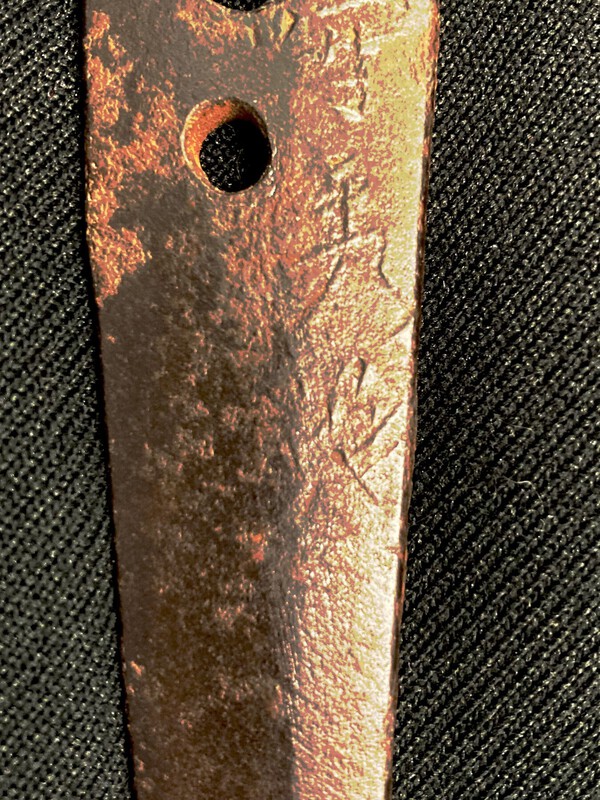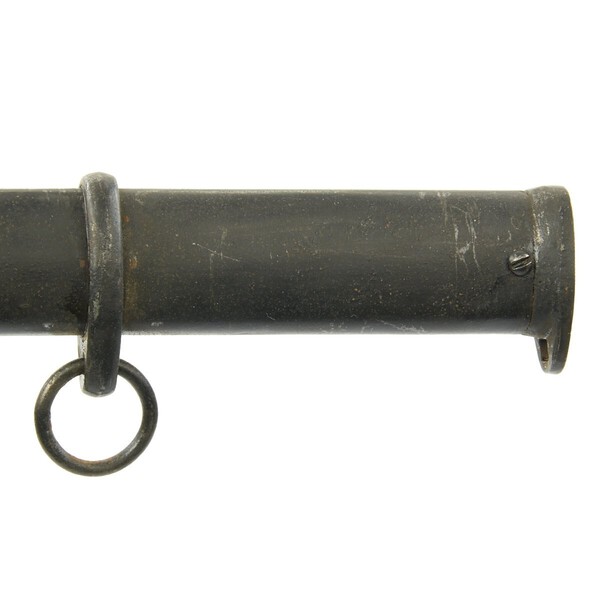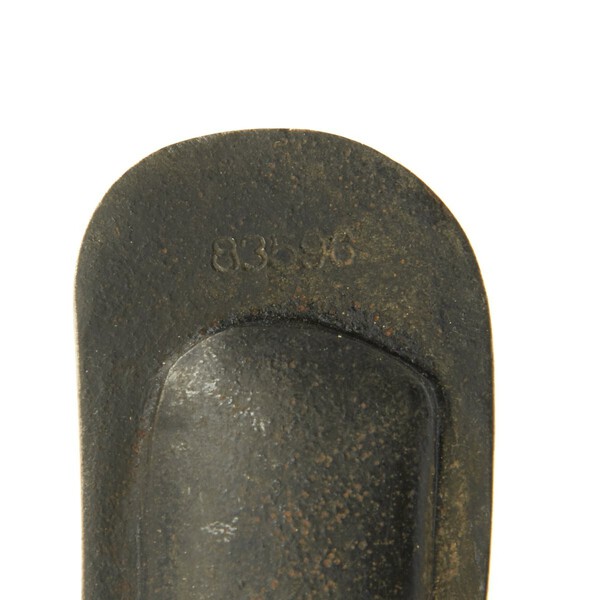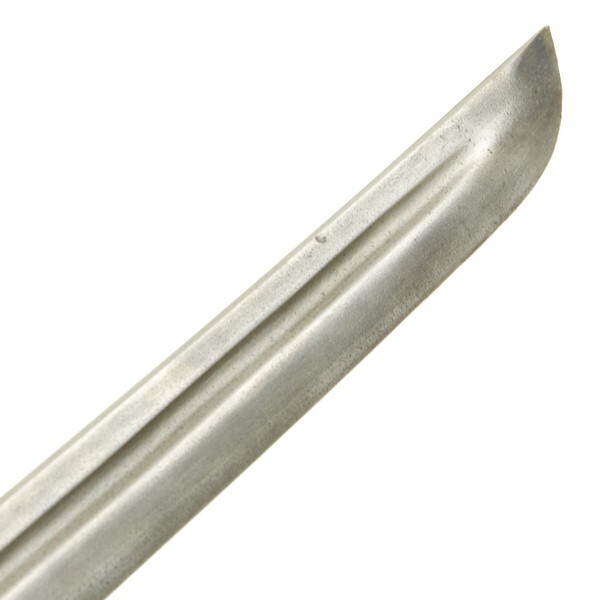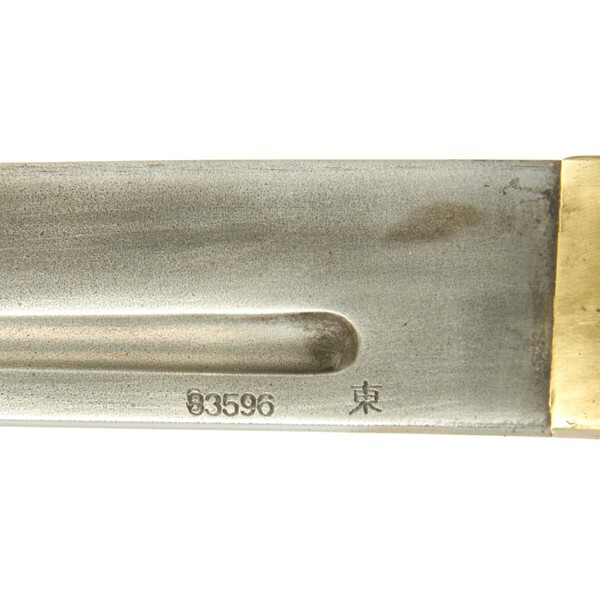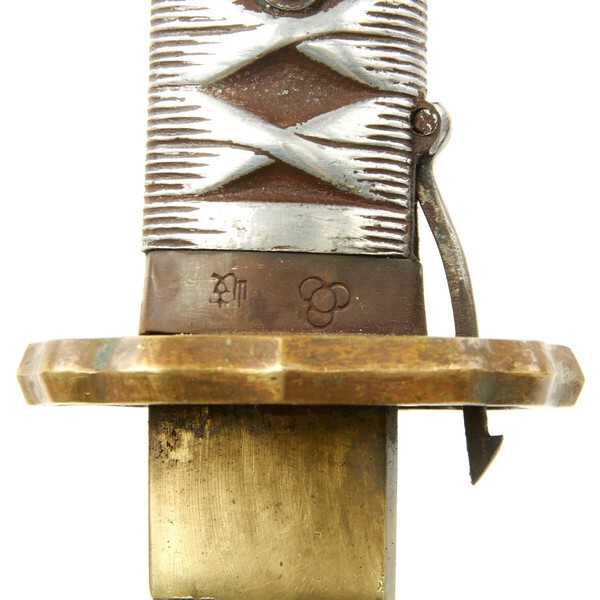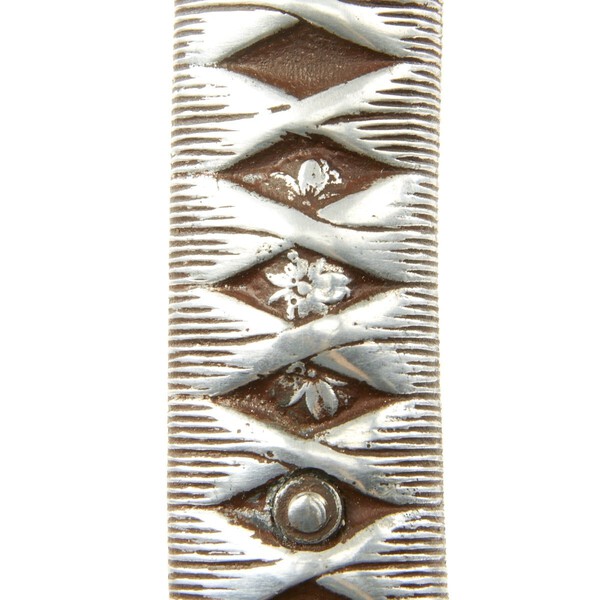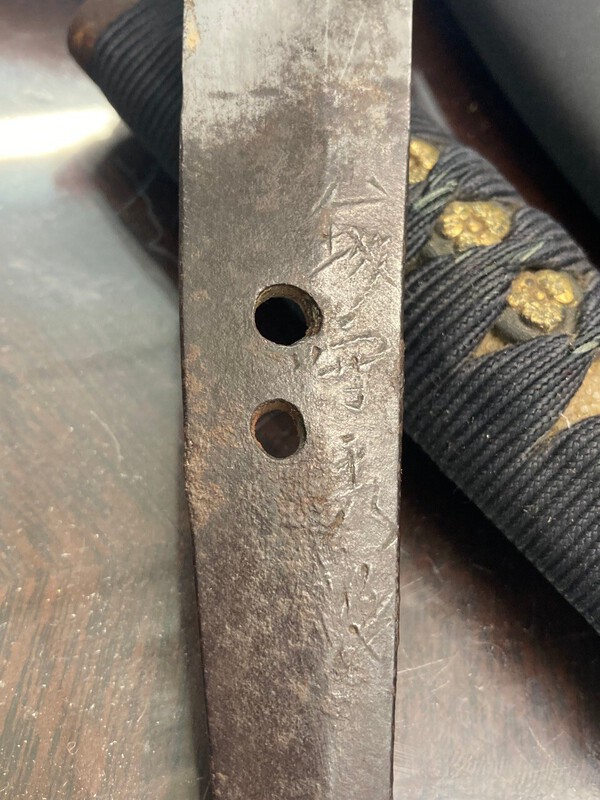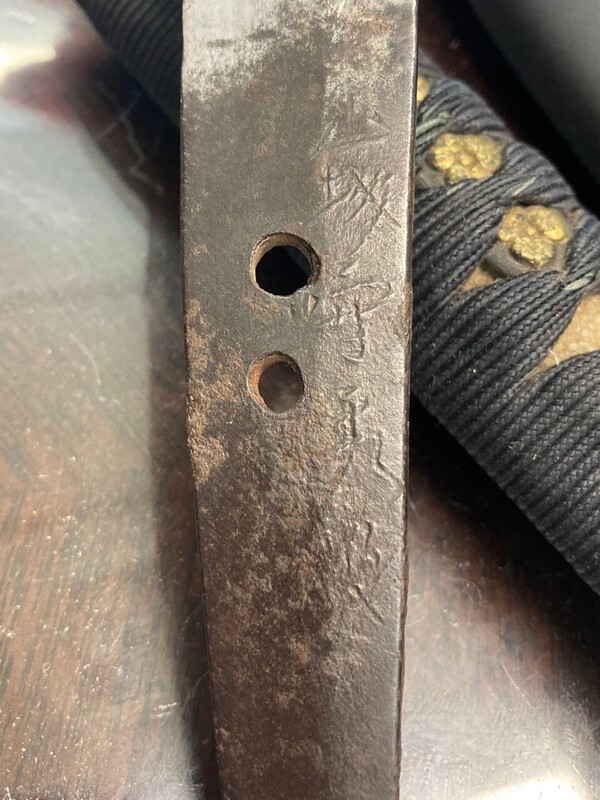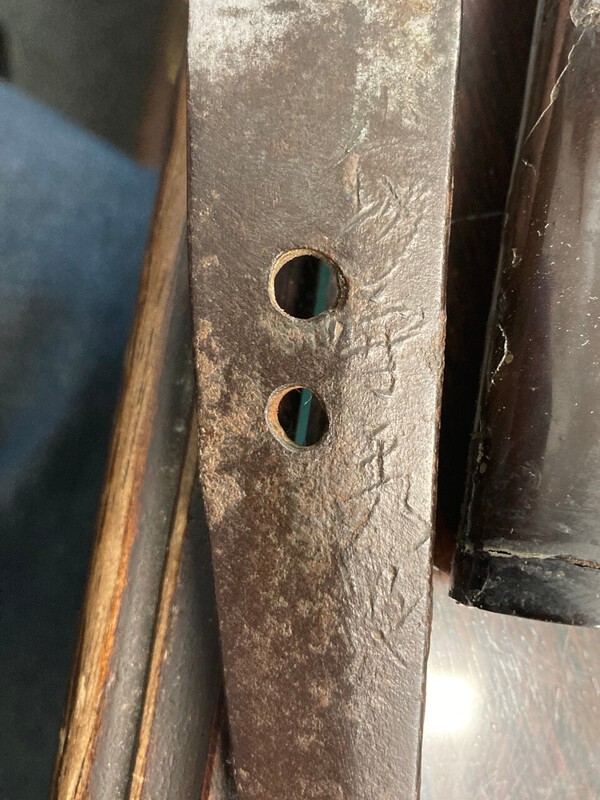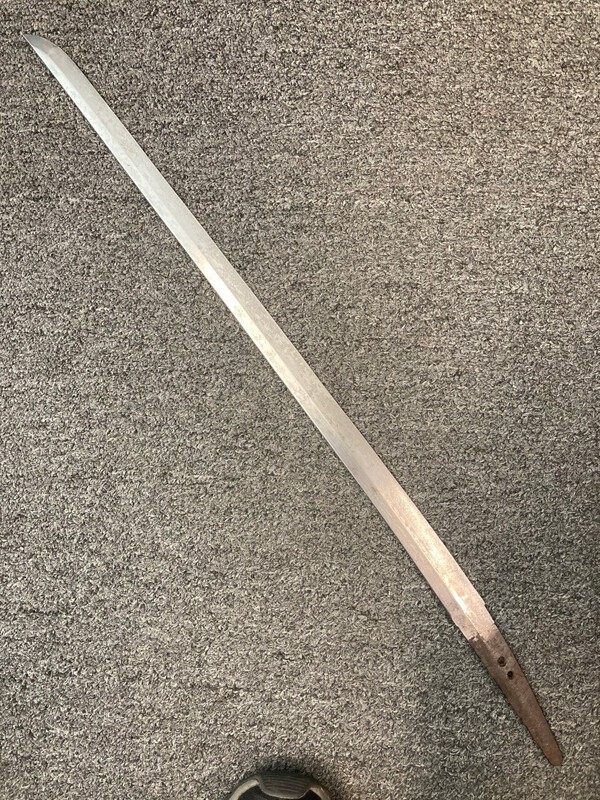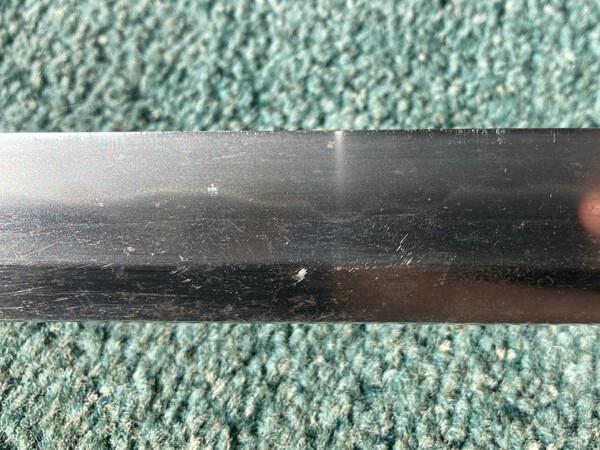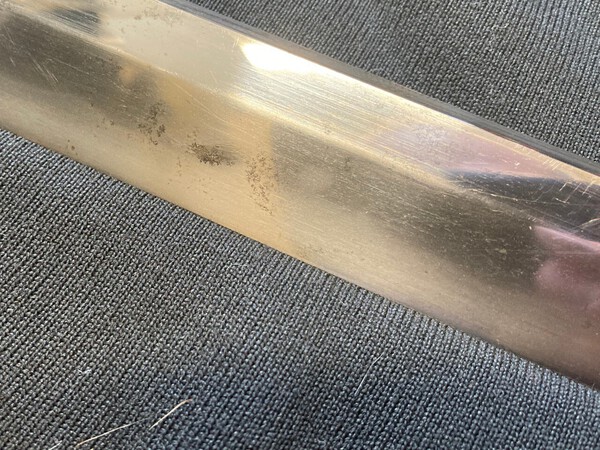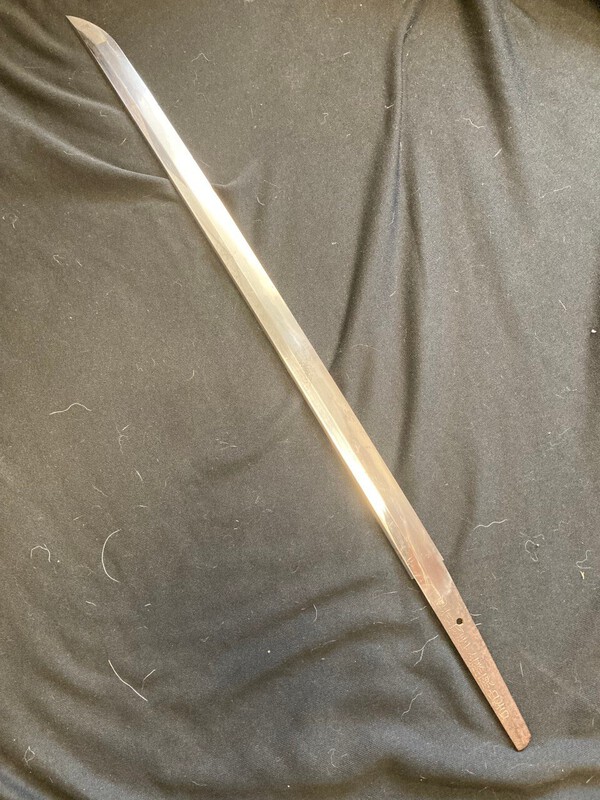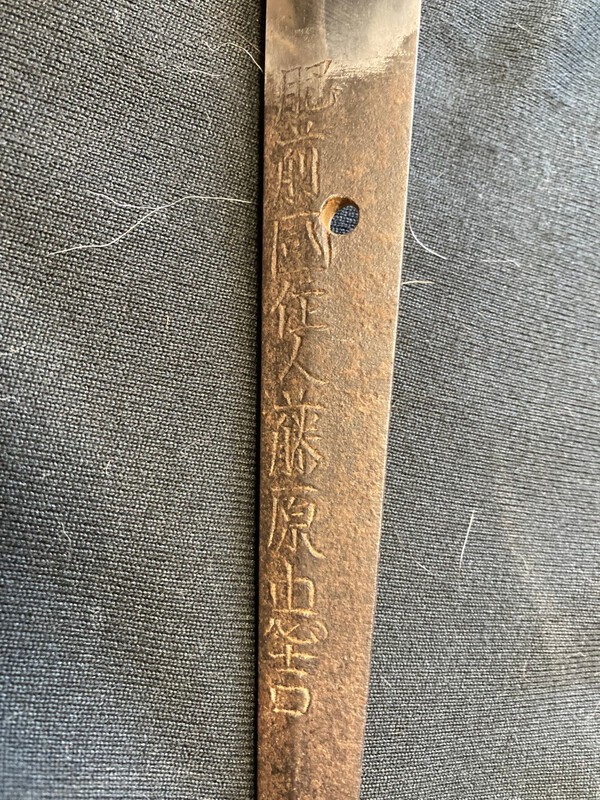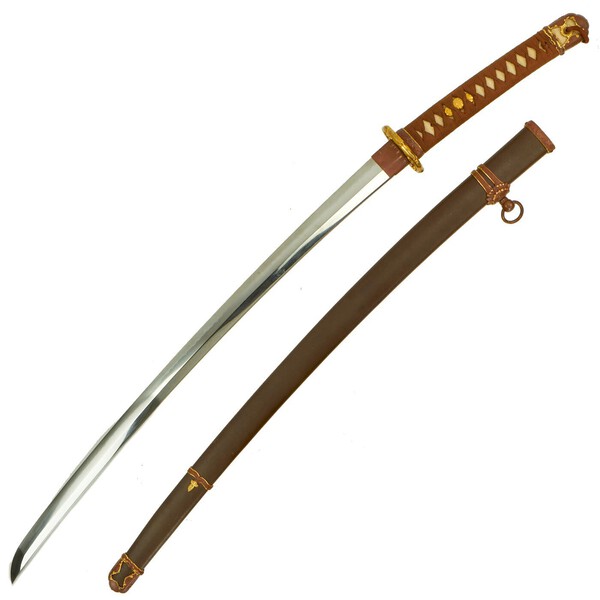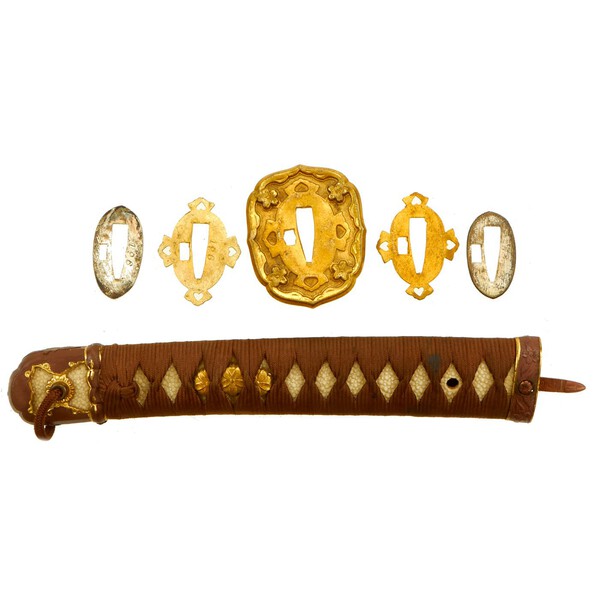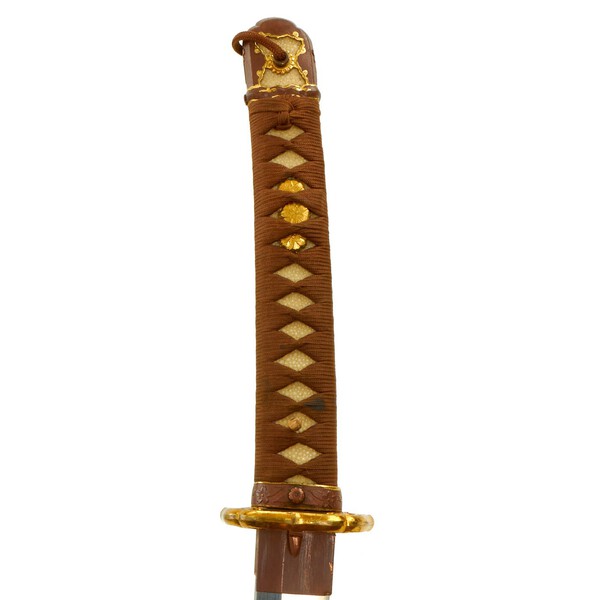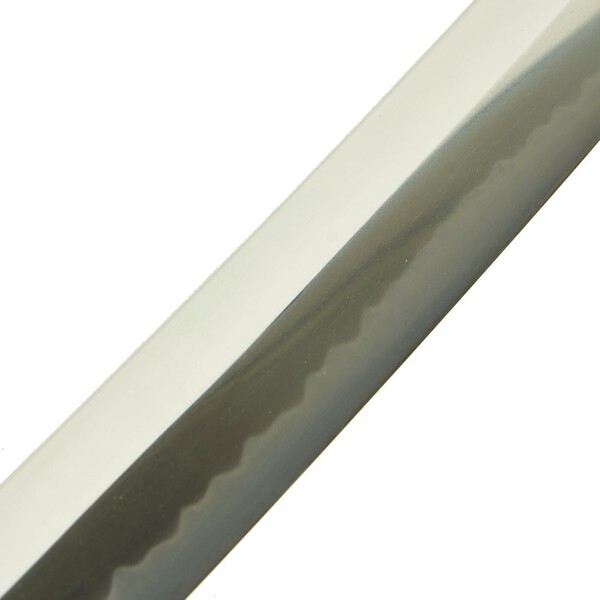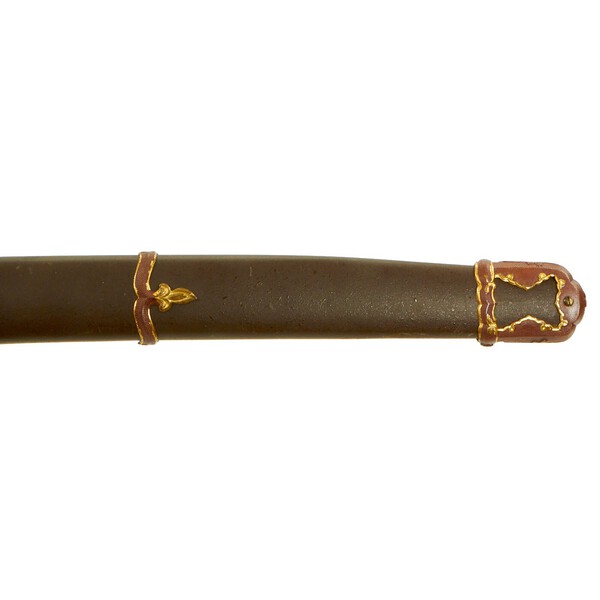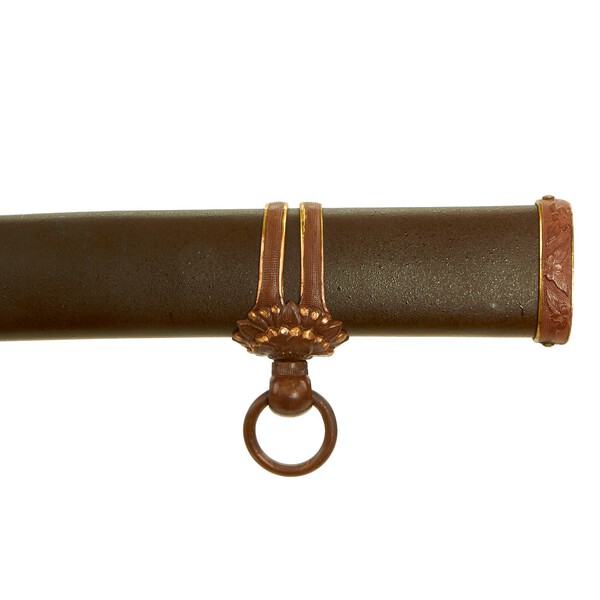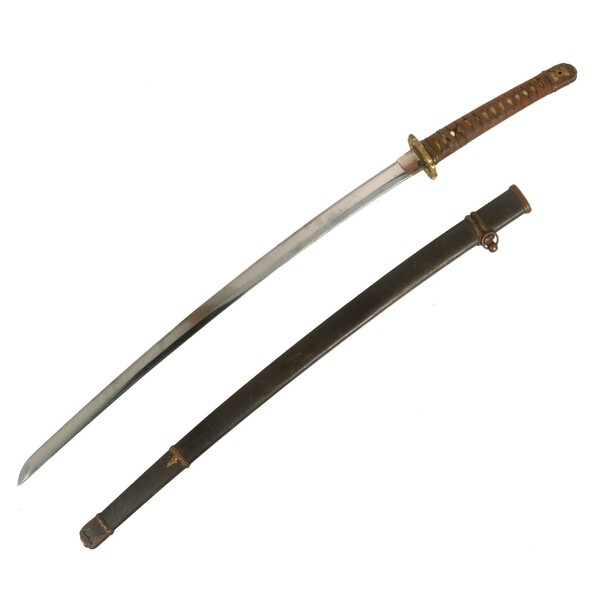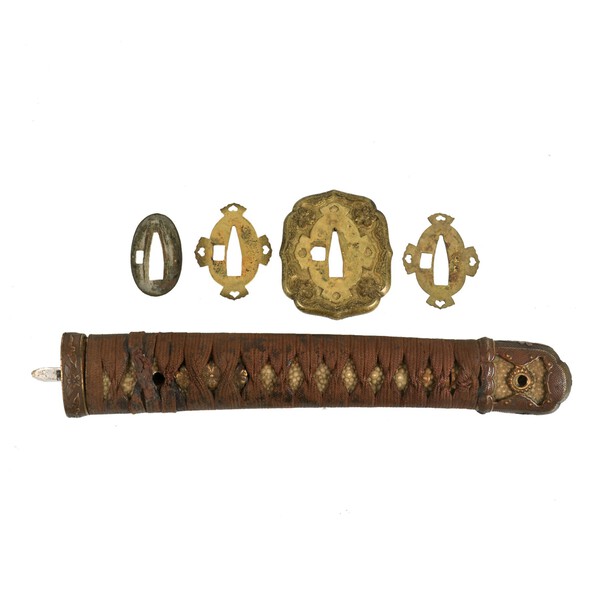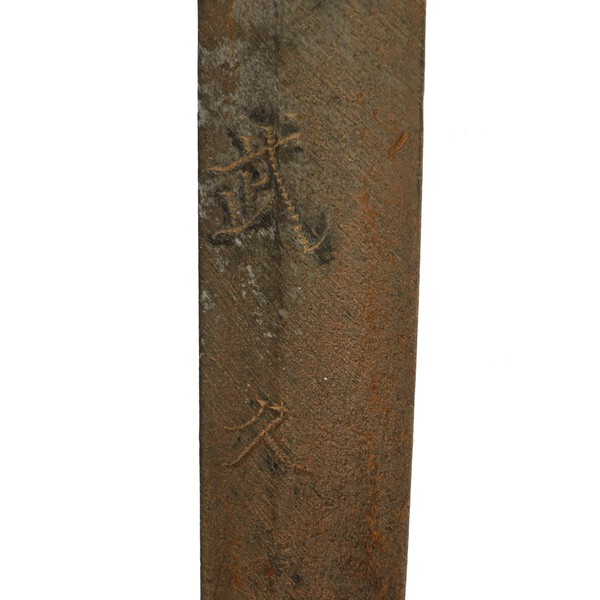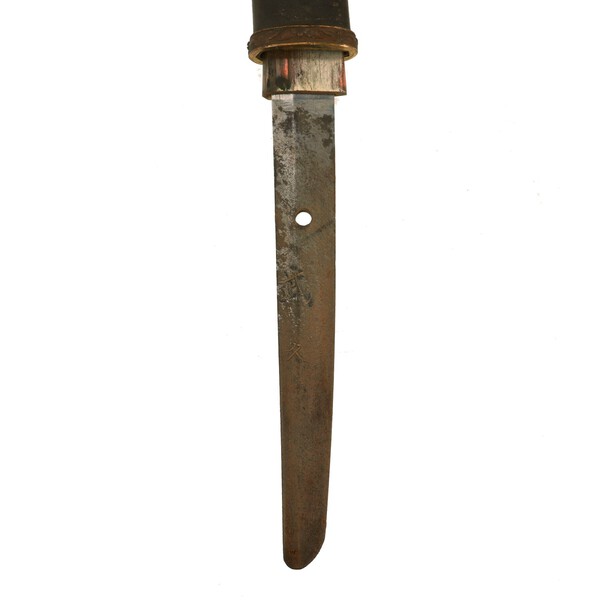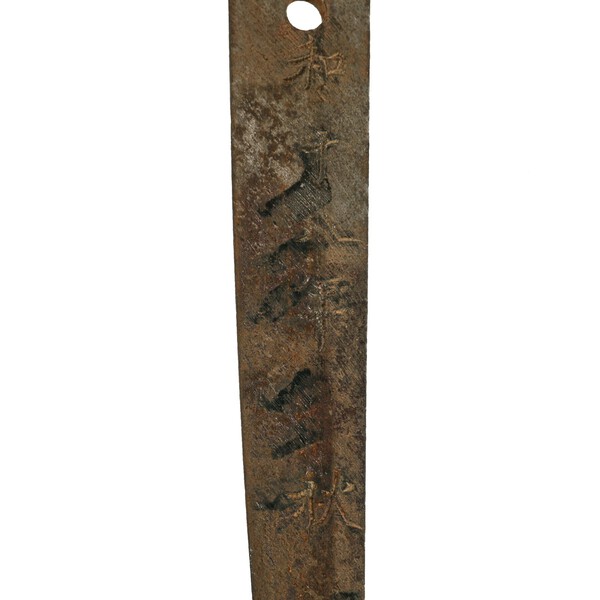
tbonesullivan
Members-
Posts
368 -
Joined
-
Last visited
Content Type
Profiles
Forums
Events
Store
Downloads
Gallery
Everything posted by tbonesullivan
-
Help With Shin-Gunto Mei. Is this KANEMASA?
tbonesullivan replied to tbonesullivan's topic in Translation Assistance
Thanks so much! I wonder if this is the same Kaneyuki that usually signed 兼 行. -
Help with Hamon Identification on TADAYOSHI Wakizashi
tbonesullivan replied to tbonesullivan's topic in Nihonto
Most likely the last polish this sword had was without the use of Hadori stones, I think it's called the Sashikomi style, compared to the Keisho style using Hadori stones to highlight the Hamon and other aspects. From what I've read it has mainly been since the 1980s that Keisho style became very popular, so swords last polished during the WWII era and prior will not have that type of highlighting. I'm on the fence on which style I like better. I definitely love the chatoyancy and asterism that you can see in blades in the hamon and along the transition. This is a kind of iridescent quality that is impossible to photograph, as it is a stereoscopic effect / result of having two eyes. Some feel that hadori can obscure that. -
This character for hiro: 廣
-
So, I was staring at this for a while, thinking that it looked like KANE MASA - 兼 正, with the more 'stylized' MASA I usually see on the late war Katanas. This is an arsenal forged Rinji Seikishi, dated 1945 on the other side. After looking around, it looks like the characters are actually 兼 征, one of the alternate forms of MASA, which I haven't seen before. Any help would be very appreciated!
-
Help on Older Katana with worn mei
tbonesullivan replied to tbonesullivan's topic in Translation Assistance
Thanks! I also found some other examples, and the last character on definitely looks like it is not TOKI. The style also doesn't match. https://world.seiyud...m/product/wa-080513/ https://sword-auction.com/en/product/12585/as17269-脇差山城守秀辰/ -
Help on Older Katana with worn mei
tbonesullivan replied to tbonesullivan's topic in Translation Assistance
I am also thinking that as well, based on the stylization of the other Kanji. I did a pretty good drawing of it (I think) at the online character finder, and that is one of the characters that comes up, with the other being 氷. https://kanji.sljfaq.org/ -
Help on Older Katana with worn mei
tbonesullivan replied to tbonesullivan's topic in Translation Assistance
It definitely appears to be a 5th character. I tried to get a good side lighting setup, but unfortunately I don't have access to one. I did manage to take a few more pictures that show some more strokes, but it's hard to get a photo that shows them all at the sale time. I'm thinking of doing a rubbing, now if only I had the correct paper and other materials to do one. -
This is a fake Type 95 NCO sword: https://www.ima-usa....riant=19314375589957 Note the spacing of the hanger bolster from the mouth of the scabbard, the terrible markings, the matching number on the drag of the scabbard. Also we didn't get any pictures of them but the seppa were very crudely made, as is the handle. The blade was also way off from what it should be.
-
Help with Hamon Identification on TADAYOSHI Wakizashi
tbonesullivan replied to tbonesullivan's topic in Nihonto
Thanks for the info! I can definitely see how such a famous lineage would have period copies. Just seems odd as the blade is definitely old and well made, with a great temper line. The handle hadn't been off so it was purchased based on the condition of the blade and the hamon alone. Probably around half of the older blades I get are actually Mumei, unlike the WWII Era blades where even stainless steel blades can have a Mei. -
Help with Hamon Identification on TADAYOSHI Wakizashi
tbonesullivan replied to tbonesullivan's topic in Nihonto
Ahh, now I see it. Seems to be a lot of gimei blades floating around lately. This one did not look to have had the handle off in quite some time, though I guess that can be faked too. -
I think that there are 5 characters in the mei, but there could also be four. One I'm pretty sure is 秀 HIDE, and above that looks like one way I have seen 兼 KANE drawn, though I am not sure. The first character looks like maybe 少, and then under it is 珍? I tried to get the best pictures I could. I tried the corn starch trick but it wasn't sticking right. Any help would be greatly appreciated!
-
I apologize for the relatively bad photos. I've tried every way I can think of to get a good hamon picture. It is a repeating wave like pattern, and there is a small circle or dot above the peak of the waves, which sometimes looks somewhat like a "notch". Blade is signed 肥前國 住人 藤原 忠吉 - HIZEN KUNI JUNIN FUJIWARA TADAYOSHI. I noted that it is signed on the "wrong" side of the blade, but it looks like at least 1st and 3rd Gen Hizen Tadayoshi did so as well. I was however wondering what the use of JUNIN vs JU indicates. The writing style does look similar to the smiths below. https://nihontoclub.com/smiths/TAD286 https://nihontoclub.com/smiths/TAD289
-
The Mysterious "w" Stamp!
tbonesullivan replied to Bruce Pennington's topic in Military Swords of Japan
These are the best I could do! Markings on all the fittings, including the tsuka and scabbard lock. the "&" symbol is clear. -
The Mysterious "w" Stamp!
tbonesullivan replied to Bruce Pennington's topic in Military Swords of Japan
I got some with my phone. Unfortunately the lens and flash photography they use on the website pictures makes it really hard to get good pictures on anything remotely shiny. I'll upload them tomorrow hopefully. -
You would need some pretty ironclad provenance on a canteen to convince me that it was an actual Iwo Jima bring back. In the early days canteens and such that USGIs picked up were traded around all the time, while in the service and at VFW meetings after the war. You'd need to find one with a signed affidavit from a confirmed Iwo Jima veteran stating that the canteen was picked up there. I'd probably also want to see either an intelligence inspected tag or a signed bring back certificate as well. If you were hoping to find a Japanese name on a canteen and prove that they were on Iwo Jima, I don't know if there are such records to research.
-
-
The Mysterious "w" Stamp!
tbonesullivan replied to Bruce Pennington's topic in Military Swords of Japan
Another TAKEHISA! Dated 昭 和 十 八 年 秋 - 1943 AKI Tang has some rust areas but there is definitely one clear "W" at the bottom on the side with the Mei. The fittings are matched as well, and the Tsuba and Seppa are marked with "& 3 3 1", while the tsuka, fuchi, and scabbard lock are marked "& 三 三 一". Never seen an ampersand used as a matching number, but I guess it works! -
OOPS. I shoulda grabbed a few from the website. I'll do that tomorrow. It was really a great sword. I almost went for it.
-
AHH! I always forget that they often mix in katakana on these. no idea what コ could mean in this context. As for the other picture, the last two kanji look like 政志, but the two before it are too faded for me to read.
-
Top canteen is just 一 三 四 - 1 3 4 Bottom is 二 ? 一 - 2 ? 1 . Not sure what that middle symbol is.
-
This is hands down the best WWII Type 98 that I've ever gotten to work with in terms of Koshirae condition. The blade was dang nice too. https://www.ima-usa....riant=40110659141701
-
I do see some of those that are more KURI-JIRI. I think there was also a 17th Century KUNITSUGU who may have used the signature at times. Now the question is when the signature was added? It's definitely an old blade, and the signature looks to have been added a long time ago. It was purchased just as an "old ko-wakizashi" with a pretty bad blade, and was not costly at all.
-
This sword has been reduced in width, a LOT. It has definitely had the Mune-Machi moved up, probably several times. It also looks the right side with the Bo'Hi has lost more material than the other side. It looks like there were two small fullers on both sides originally. Right now, at the Mune-machi, it is 5.8mm thick along the Mune. A few cm in and it's down to 4.6mm. There is also a good amount of ware and fukure blade wounds on that side, and the tip may have had some type of repair done to it. I don't see any shintetsu though. 1cm behind the Mune-machi, where it used to be part of the blade, it's 6.6mm.


